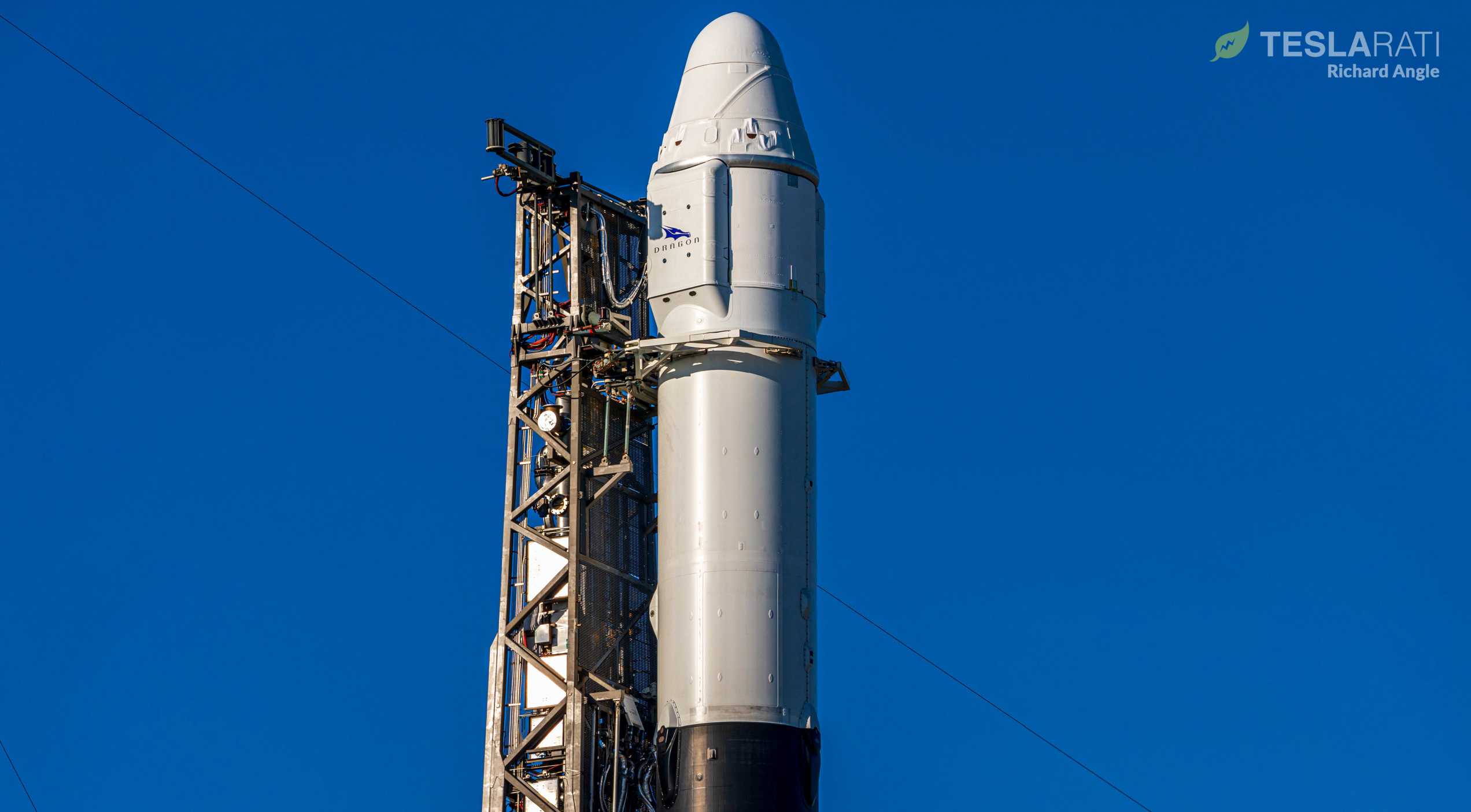
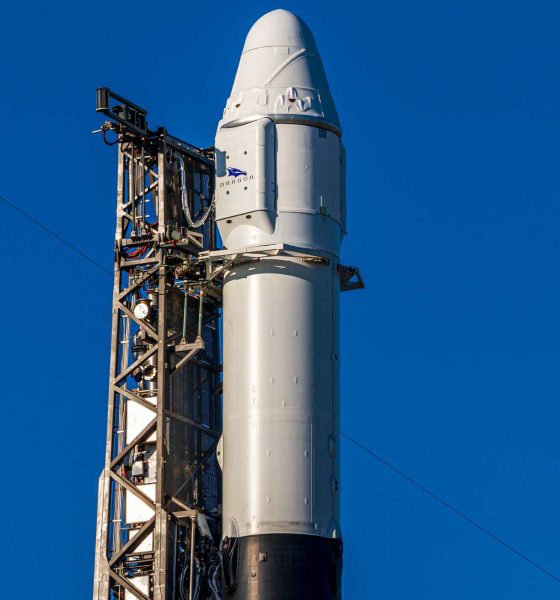
News
SpaceX Starlink launch ambitions just saved a space station resupply mission from bigger delays
SpaceX’s ambitious 2020 Starlink launch goals have unintentionally saved a Cargo Dragon spacecraft mission from much longer delays after a major part of its Falcon 9 rocket had to be replaced at the last second.
Known as SpaceX’s 20th NASA Commercial Resupply Services (CRS-20) mission, SpaceX’s Cargo Dragon spacecraft was initially scheduled to launch supplies to the International Space Station (ISS) as early as March 2nd, 2020, a date that recently slipped four days to 11:50 pm EDT (04:50 UTC), March 6th. Simultaneously, a separate Falcon 9 Starlink mission – assigned to a different launch pad – found itself delayed from March 4th to March 11th.
A day or so after news of the CRS-20 launch delay first broke, NASA published a blog post noting that SpaceX had taken the extraordinary step of fully replacing the mission’s Falcon 9 second stage, the part of the rocket (pictured underneath Dragon in the photo above) tasked with taking payloads from the edge of space into Earth orbit (or beyond). Triggered by a faulty component in its space-optimized Merlin Vacuum engine, the fact that SpaceX chose to replace the upper stage and still only delayed CRS-20’s launch by four days suggests that its ambitious Starlink launch plans are already creating positive side effects for commercial customers.
"SpaceX identified a valve motor on the second stage engine behaving not as expected and determined the safest and most expedient path to launch is to utilize the next second stage in line that was already at the Cape and ready for flight."https://t.co/E9dokEAf0n— Michael Baylor (@MichaelBaylor_) February 25, 2020
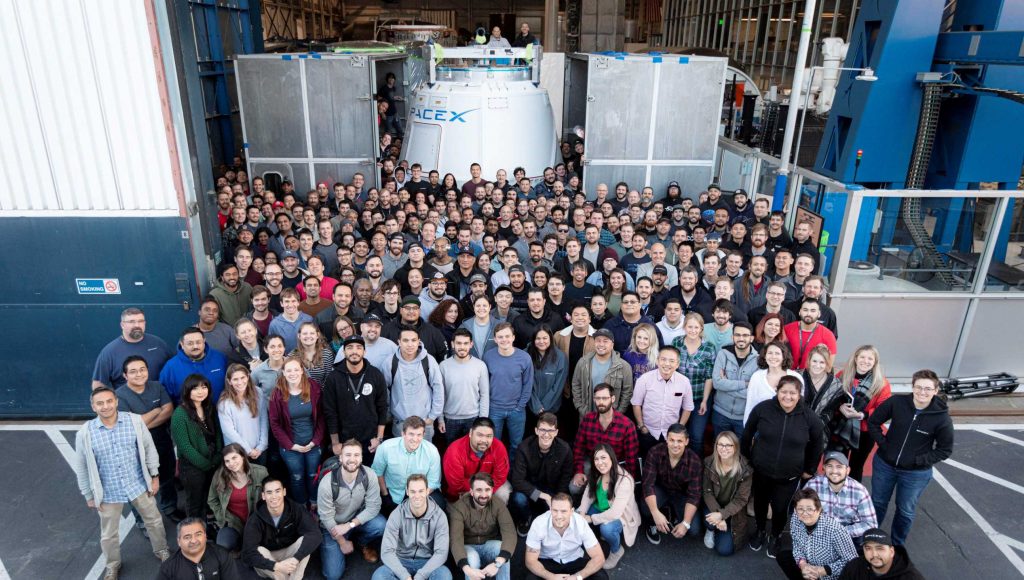
As of late, multi-day hardware-related launch delays have been rather rare for SpaceX, who has instead suffered numerous weather-related scrubs over the course of completing its Fall 2019 and Winter 2020 launch manifest. SpaceX’s February 17th Starlink-4 mission did suffer a minor second stage valve-related delay that was fixed in about 24 hours, but things have otherwise been quite smooth for Falcon 9.
Given all that goes into building and testing Falcon 9 second stages, there are very few good explanations (aside from pure luck) that would allow for a given SpaceX launch to entirely replace its assigned second stage a week before liftoff and only slip a handful of days. Nevertheless, with CRS-20, SpaceX is attempting to do exactly that.
“SpaceX identified a valve motor on the second stage engine behaving not as expected and determined the safest and most expedient path to launch is to utilize the next second stage in line that was already at the Cape and ready for flight. The new second stage has already completed the same preflight inspections with all hardware behaving as expected. The updated target launch date provides the time required to complete preflight integration and final checkouts.”
NASA.gov — February 25th, 2020
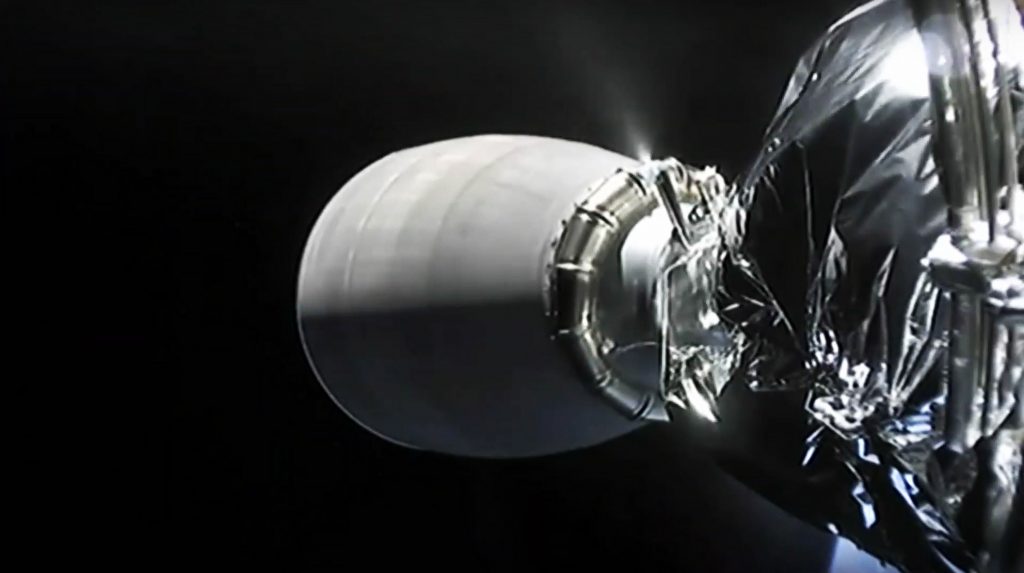
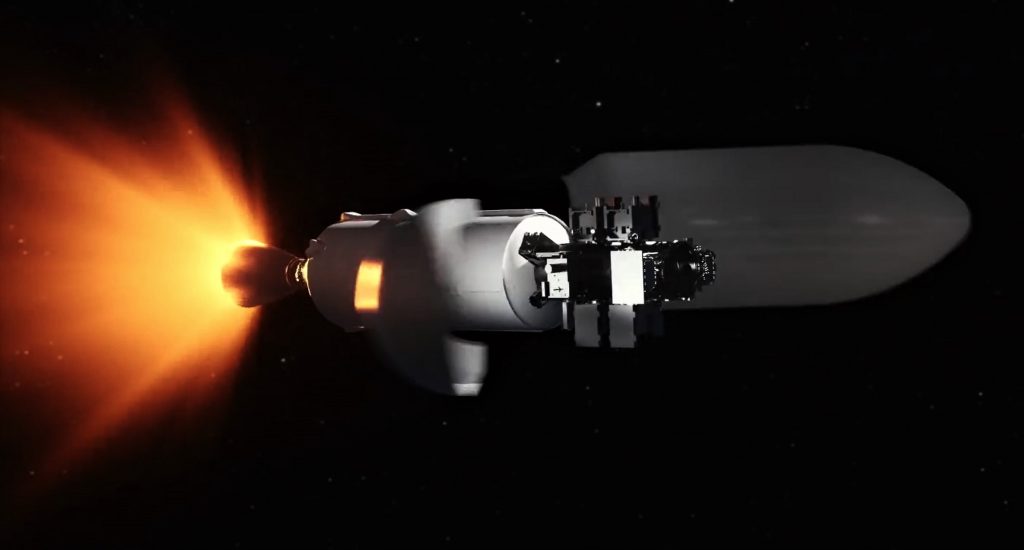
The specific lead times SpaceX’s Falcon rocket family parts require is almost totally unknown but it’s safe to say that the process of building a Falcon upper stage from scratch, performing acceptance testing in Texas, and shipping said stage to the launch pad takes months from start to finish. For SpaceX to be able to attempt to minimize CRS-20’s delays to just four days while still fully swapping out its upper stage, the company would have quite literally had to have had another Falcon stage just sitting around in Florida.
As it turns out, per NASA’s official statement, that is precisely what transpired. A separate second stage was already in Florida and “ready for flight”, giving SpaceX the luxury of selecting the safest option theoretically available. Beyond the hardware already being ready to go in Florida, the stage reassignment almost certainly also hinged upon the mission it was assigned to being somewhat nonessential – a label that SpaceX would be hard-pressed to affix to any of its customers’ launches. An internal Starlink mission, however, would be a perfect opportunity, allowing SpaceX to avoid both picking favorites and seriously impacting (aside from the ~4-day CRS-20 delay) its paying customers.
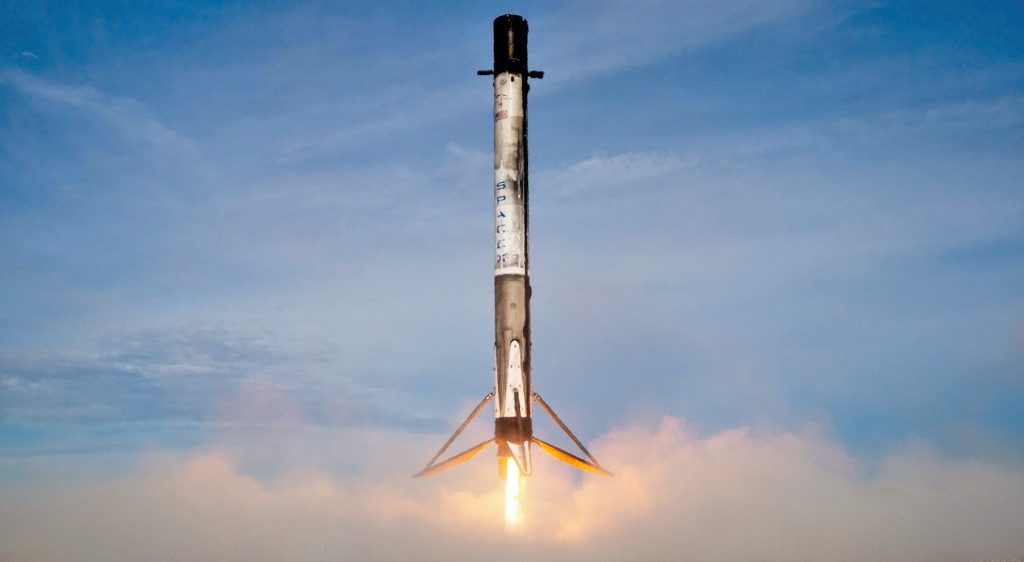
To be clear, SpaceX was thus able to swap out CRS-20’s upper stage at the last second with only a minor schedule impact almost exclusively because of it’s ambitious plans for 20-24 Starlink launches this year. If the company wasn’t pursuing a more than biweekly 2020 launch cadence, it’s much more likely that CRS-20 would have had to make do with its second stage or wait for a new one to be built, potentially delaying the launch by one or two weeks, if not longer.
In simple terms, the launch cadence SpaceX is targeting (and needs) for its Starlink constellation is already exhibiting signs of a future where its high-performance orbital-class rockets have been almost entirely commodified.
Check out Teslarati’s Marketplace! We offer Tesla accessories, including for the Tesla Cybertruck and Tesla Model 3.

News
Tesla launches its new branded Supercharger for Business with first active station
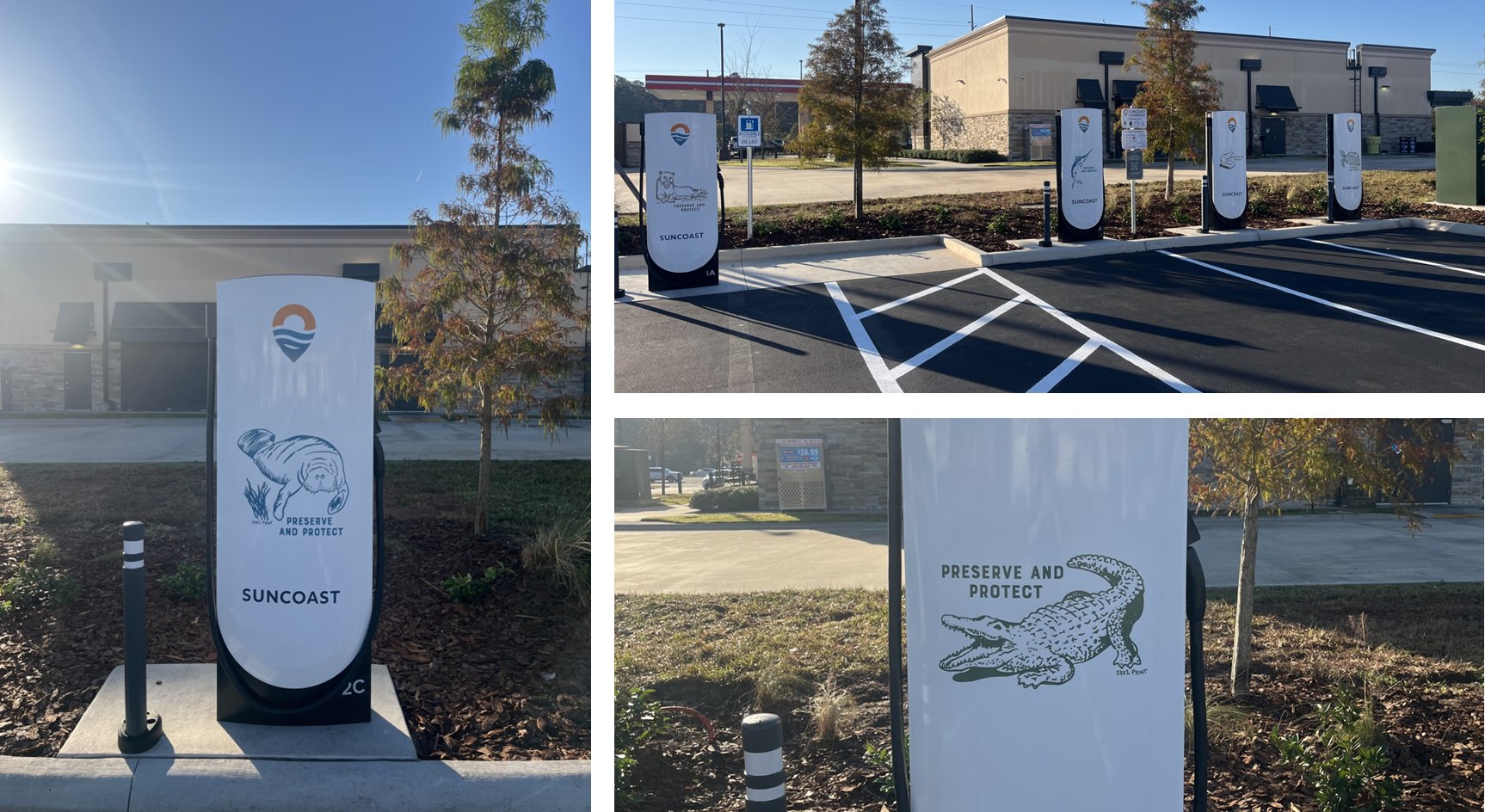
Tesla has officially launched its first branded Supercharger just months after initiating a new program that allows third-party companies to brand their own charging piles.
The site opened in Land O’ Lakes, Florida, and features eight V4 Supercharging stalls offering up to 325 kW of charging speed. It appears it was purchased by a company called Suncoast Credit Union. This particular branch is located Northeast of Tampa, which is on the Gulf of Mexico.
It features graphics of Florida animals, like alligators:
Here’s a video of the graphics being installed on the Tesla Superchargers at this site: https://t.co/oIfEPNZjAH pic.twitter.com/ENWakZ2qT9
— TESLARATI (@Teslarati) November 20, 2025
Tesla launched this program back in September, and it basically was a way to expand its Supercharger presence and also allow companies to pay for the infrastructure. Tesla maintains it. When it announced the “Supercharger for Business,” it said:
“Purchase and install Superchargers at your business. Superchargers are compatible with all electric vehicles, bringing EV drivers to your business by offering convenient, reliable charging.”
The program does a few things. Initially, it expands EV charging infrastructure and makes charging solutions more readily available for drivers. It can also attract people to those businesses specifically.
Tesla launches new Supercharger program that business owners will love
The chargers can also be branded with any logo that the business chooses, which makes them more personalized and also acts as an advertisement.
The best part is that the customers do not have to maintain anything about the Supercharger. Tesla still takes care of it and resolves any issues:
“We treat your site like we treat our sites. By providing you with a full-service package that includes network operations, preventative maintenance, and driver support, we’re able to guarantee 97% uptime–the highest in the industry.”
It appears the Superchargers will also appear within the in-car nav during routing, so they’ll be publicly available to anyone who needs to use them. They are still available to all EVs that have worked with Tesla to utilize its infrastructure, and they are not restricted to people who are only visiting the business.
Cybertruck
Tesla reveals its Cybertruck light bar installation fix

Tesla has revealed its Cybertruck light bar installation fix after a recall exposed a serious issue with the accessory.
Tesla and the National Highway Traffic Safety Administration (NHTSA) initiated a recall of 6,197 Cybertrucks back in October to resolve an issue with the Cybertruck light bar accessory. It was an issue with the adhesive that was provided by a Romanian company called Hella Romania S.R.L.
Tesla recalls 6,197 Cybertrucks for light bar adhesive issue
The issue was with the primer quality, as the recall report from the NHTSA had stated the light bar had “inadvertently attached to the windshield using the incorrect surface primer.”
Instead of trying to adhere the light bar to the Cybertruck with an adhesive, Tesla is now going to attach it with a bracketing system, which will physically mount it to the vehicle instead of relying on adhesive strips or glue.
Tesla outlines this in its new Service Bulletin, labeled SB-25-90-001, (spotted by Not a Tesla App) where it shows the light bar will be remounted more securely:


The entire process will take a few hours, but it can be completed by the Mobile Service techs, so if you have a Cybertruck that needs a light bar adjustment, it can be done without taking the vehicle to the Service Center for repair.
However, the repair will only happen if there is no delamination or damage present; then Tesla could “retrofit the service-installed optional off-road light bar accessory with a positive mechanical attachment.”
The company said it would repair the light bar at no charge to customers. The light bar issue was one that did not result in any accidents or injuries, according to the NHTSA’s report.
This was the third recall on Cybertruck this year, as one was highlighted in March for exterior trim panels detaching during operation. Another had to do with front parking lights being too bright, which was fixed with an Over-the-Air update last month.
News
Tesla is already expanding its Rental program aggressively
The program has already launched in a handful of locations, specifically, it has been confined to California for now. However, it does not seem like Tesla has any interest in keeping it restricted to the Golden State.

Tesla is looking to expand its Rental Program aggressively, just weeks after the program was first spotted on its Careers website.
Earlier this month, we reported on Tesla’s intention to launch a crazy new Rental program with cheap daily rates, which would give people in various locations the opportunity to borrow a vehicle in the company’s lineup with some outrageous perks.
Along with the cheap rates that start at about $60 per day, Tesla also provides free Full Self-Driving operation and free Supercharging for the duration of the rental. There are also no limits on mileage or charging, but the terms do not allow the renter to leave the state from which they are renting.
🚨🚨 If you look up details on the Tesla Rental program on Google, you’ll see a bunch of sites saying it’s because of decreasing demand 🤣 pic.twitter.com/WlSQrDJhMg
— TESLARATI (@Teslarati) November 10, 2025
The program has already launched in a handful of locations, specifically, it has been confined to California for now. However, it does not seem like Tesla has any interest in keeping it restricted to the Golden State.
Job postings from Tesla now show it is planning to launch the Rental program in at least three new states: Texas, Tennessee, and Massachusetts.
The jobs specifically are listed as a Rental Readiness Specialist, which lists the following job description:
“The Tesla Rental Program is looking for a Rental Readiness Specialist to work on one of the most progressive vehicle brands in the world. The Rental Readiness Specialist is a key contributor to the Tesla experience by coordinating the receipt of incoming new and used vehicle inventory. This position is responsible for fleet/lot management, movement of vehicles, vehicle readiness, rental invoicing, and customer hand-off. Candidates must have a high level of accountability, and personal satisfaction in doing a great job.”
It also says that those who take the position will have to charge and clean the cars, work with clients on scheduling pickups and drop-offs, and prepare the paperwork necessary to initiate the rental.
The establishment of a Rental program is big for Tesla because it not only gives people the opportunity to experience the vehicles, but it is also a new way to rent a car.
Just as the Tesla purchasing process is more streamlined and more efficient than the traditional car-buying experience, it seems this could be less painful and a new way to borrow a car for a trip instead of using your own.








